Andreea Dobrin is, in her own words, a “graphic designer // illustrator // artist (but the order often changes)”. This year, she is in charge of visually branding the 4th edition of the Bucharest Art Pavilion – Art Safari. She lives and works in Hamburg and has her own graphics studio, Summerkid. Before this interview, I had no idea Andreea is also a wonderful narrator, a kind of local meddah whose story has a flow, and who is funny and alive.
I must admit that Andreea did not wish to start off with the questions I had prepared for her. Since the beginning of the interview she had her eye on me, curious to know me (although she had already looked me up online), similar to how a graphic designer wants to know all the facets of a future client in order to offer them a fine package that best caters to all their particular dimensions and aspirations. So the interview wasn’t an interview after all, but a normal discussion between two people who lived a small portion of their childhood during the last years of communism and a bigger chuck during the 90s and met to talk about how their personal and professional routes dressed this common social skeleton.
Andreea, you had a different professional route than other artists who start training early on, tell me a little bit about this detour of yours.
Yes, it’s more of a reverse route… I think that the very essence of our work is what produces the image. And if I were to talk to you about this and its path throughout the various stages of my life, you’d see that producing images has always interested me. I was perhaps subjected to contexts that differ from the normal rundown that an artist usually has, but after everything I ended up in the same place…
Like any child, I would draw and one of the things I remember is the impact of TV commercials post-revolution and the fact that one of my favorite ways to play was to draw slogans and this is a preoccupation specific to graphic design… My mom was a gymnastics teacher and I think one of the first images in my mind was that of Nadia and my mom in the locker room, an emblematic image for 80s kids. Like any slightly privileged child, my parents signed me up for various activities expect drawing. Gymnastics when I was four and violin lessons when I was six. At about twelve, when independence and free will first manifest themselves, I told them I want to abandon all these and that I want to draw. I started frequenting some kid courses at the Piteşti art high school, where I’m originally from, courses that I loved and did not compare to anything I had previously done. When I had to sign up for high school: “Dear parents, I want to study at the art high school!”, and my dear parents told me: “Stop it with this non-sense, you have to start doing something real, you’ll study at a mathematical high school.”
So your parents categorically opposed a career in art? What about in an improbable future, after you graduated from a “serious” college?
There was no such thing as this kind of future, this future meant to get a job and start producing money. But I don’t blame them because, after all, this experience was for the best and offered me another perspective… The idea is that it all kind of ended there and my route became inertia. And this inertia followed me all the way to college, when I was in my 2nd or 3rd year, when nothing seemed to be happening, from nowhere came the course that changed my life, it was a course on web-design so I seized the opportunity as my only way to get back, at least for a little bit, to what it meant to produce images… This course had a lecturer who I showed some of my digital images and asked him: “Could I make a living doing this?” and he firmly answered “YES”. The answer gave me purpose and that purpose was to study graphic design on my own, just like a lot of other people were doing at the time (*during the early 2000s) because it synced with the internet boom, because it was a liberal way of producing images, because there was a growing number of job openings in the advertising agencies without the need for specialized studies – and this was my way in. I started working in advertising and my way of producing images was mimetic. I learned some graphics software on my own, I was following others and tried to reproduce and on top of that there were the needs of clients and people I was working with. I did this for a few years and ended up in a very comfortable financial situation but I actually like graphic design, I always loved it, I enjoy producing images and I realized that I miss drawing. I spent a year prepping for art school, I struggled a little, I was at my desk job sometimes over 8 hours a day, I would draw at night and I managed to be one of the last to get accepted at the UNArte graphics department.
In college I was lucky enough to end up in Carmen Apetrei’s class which for me was a real game changer. My expectations were pretty small, to become a graphic designer who knows how to draw. But so much more happened… I thought that I was far behind my colleagues who were drawing since the 5th grade.
Did this make you more ambitious?
This wasn’t the case because there was no point comparing us, people are so different there is reason to compare; in the beginning there was a ranking system but that did not matter. The first thing Carmen told us was: “Forget everything you were thought!”, it was perfect because I had nothing to forget, I had virtually nothing to erase. She gave us a lot of freedom. There were no expectation for everyone to work the same way. Each of us had something particular that we could grow. This is what it was about, we didn’t perceive it as a competition. In end I can conclude that college doesn’t just teach you how to draw or how to transpose an idea into an image, it teaches you how to think about producing an image.
Do you think that your former studies offered you a different thinking structure than the one you mastered in art school? Because if you start thinking differently when you enter a formal artistic education, then I can imagine there are other distinct thinking structures that one obtains from other formal studies; was this an advantage for you?
It’s possible… there’s also the fact that I wasn’t overwhelmed by the theoretical courses or the amount of information I had to learn. At ASE I used to read books that were much more thicker so from this point of view, perhaps it was easier for me to structure everything. There was also my habit of meeting deadlines and working; you learn work ethics at your job and I also had this experience.
Your actual experience in add agencies…
Yes, but that’s not all that’s different, it’s possible that I would have been different if I would have went to art school in the 2000 as my first choice because it was a different context, I think the UNArte teachers were also different, the students too, as opposed to 10 years later so I don’t regret having this experience later just as I don’t regret my previous studies not having to do with art. In my last year I got an Erasmus scholarship and went to Leipzig at Hochschule für Grafik und Buchkunst, meaning graphics and book art. I loved it there and felt that it was an experience I totally immersed myself in. I spent all my time in their printing, screen printing and woodcut studios. And again, your expectations can vary greatly from what actually happens. For example: I took a typography course where all we did was talk for hours.
What did you talk about?
The professor had a pack of books he made especially for us, it was in the library there. The general theme was identity, but we ended up talking abut guns. The professor told us a lot of stories, from when he was young in Berlin to the gangsters of the 20s and 30s. In the end we had to do a work on graphics and graphic identity but in a different way, just from talking.
And via these discussions you got interested and poured your souls in what you worked on because this method was very engaging.
There was no question that everyone was interested, we all were from the start. Not everyone was an Erasmus student, my mates knew this professor so they knew his approach wouldn’t be a classic one.
Are all professors like this, is this the case for the entire school? Or was this professor a singular case?
I think this is how this school is, it prides itself with the fact that it’s different than other German universities, but I think that all schools are different. For example, a girl told me that for their entry exam they had to draw each other’s shoes, so in the end it’s all a very liberating expression of creativity.
And there’s probably a new theme each year so you never know what to expect.
For sure. The school is rather small too, you always bump into students from other departments; this doesn’t happen too often at UNArte.
So they’re encouraging students from various specializations to interact.
The courses are structured as such so you have no choice and the groups are so small, you’re forced to work with others. I found it very interesting that it was very easy to exhibit your work.
Now you live in Hamburg, what’s it like?
Ever since I went to Germany on that scholarship I was very determined to go back because I really like everything that is going on here with graphic design. An here is where I found a creative peace. I felt like I was coming back to a kind of noise when I returned from Germany. Hamburg is a lovely city, very green, a pleasure to live here, not that much traffic, a lot of bikes. The administrative or fiscal aspect is more stable and perhaps all these put together offer me that creative peace I was talking about.
The personality that oozes from your works, one which I find to be very well drawn out, did you gain it after you went to Germany with Erasmus or did you have it since you were in college?
It’s hard to say, the time before Germany was one dedicated to studying, to rather school-like works that look like nothing I am working on now. My graduate project was my first long term project where I developed much of this personality you mentioned.
I did two book projects and an animated movie where I talked about the revolution. The book project was called My revolution and had various drawings of mine that my mom kept since I was 6, 7 or 8 and culminated with the revolution because this is what we were asked to do in school back then. Before the revolution we had the same old themes: The crops, The country’s treasures, May the 1st, etc. And right after the revolution, after the winter vacation which was exceptionally long, in came our comrade teacher and said to us in a very reassuring voice “Now we’re drawing the revolution.” I found it interesting to alternate these images with current realities without being necessarily critical, just observational. The movie was about Ceauşescu’s last speech; thes were the few vivid memories I have from back then, I think I even cried but not out of fear, I think I felt his fear, I simply felt pity for him…
I also saw the revolution on TV just like you but I can’t remember the speech that well, what impressed me was his shooting – and if I were to say that something related to the revolution stayed with me as an artist, that’s probably it and this is why my works carry a kind of anguish whereas your works hold nothing heavy. It’s not that you look at things with detachment, but rather with… can I say humor?
Yes, you can say that and I am very aware of this approach via the images, the colors, the tone is important, we can say the same thing but in a different tone and that changes everything.
And who is Ţică?
Țică is the interview my grandparents gave for the Folklore Institute about what they did when they heard Ceauşescu died. My grandmother was a creator and an amateur traditional music singer and my grandfather Ţică was a shepherd and they lived a simple life in the mountains. Finding the interview in English was amusing to me because I heard my grandma speaking in English, saying things like “Ceaușescu has fallen”; she would never say anything like that. Perhaps only I found this to be amusing, but I felt the need to do it anyway because my grandma passed away two years earlier and it was like a personal outpour. Actually, a lot of my personal projects take a piece of me, it’s therapeutic.
Ioana Ciocan saw my project and, since she was doing the “After 25 years” project that year, she thought I could be a part of it. She is the one who organized my first solo show in which she took part of my graduation work which we developed together in August 2014 at Magheru One.
While we’re on the subject, tell me a little bit about your experience at Art Safari.
Ioana rediscovered me with the illustrations I came up with last year for my graphic design studio. I thought of using my studio to make a kind of author graphics that can be applied – this is simply an illustration. So officially, I’m an illustrator since last year when I opened my studio in June. Since then, I’ve been promoting this with moderate results. Actually I think this is another type of visual language and I enjoy inventing visual languages. I am not the person to have just one visual language and it’s interesting to think of it as it were a foreign language that you learn on your own – at first you’re clumsy and things turn out weird, but then you get a handle on it and then you can even write small poems. So my most recent language, a very illustrative one at that, caught Ioana’s eye and I ended up doing the branding for Art Safari. What I loved about this project what that Ioana is no ordinary client that comes in my studio with very clear demands. She gave me total freedom to think about what to do. After I made the initial illustrations, they can be applied to banners, there will be a catalog, small animations. Mircea Popescu is also lending a hand because there is a lot to do.
In your illustrations for Art Safari you presented various ways in which one can interact with art, even for those who don’t usually come into contact with the art scene. Is the Romanian public, compared to the German public, willing to make this interaction, to pay money to see an art exhibition?
I think so, especially since this phenomenon is growing and growing. It’s a matter of time and practice, that’s all.
So the conclusion of your artistic route would be…
One conclusion is that I love graphic design, I am a graphic designer and, ideally, I will continue to do this well into my 80s, like Milton Glaser. Milton Glaser is my favorite graphic designer, especially since he also had an art education and this is how he always saw himself: an honest to God American graphic designer… it’s true that the context is different: in the 70 he would work on different designs because the technique was different, but he also had a different perspective and that was important because it was very helpful…
This text is based on a series of Skype discussions that took place in April 2017.
POSTED BY
Iulia Morcov
Iulia Morcov is a visual artist. She graduated from the National Arts University in Bucharest in 2007, and received her Ph.D. at the same institution in 2013. Her research topic was the problematics o...
iuliamorcov.blogspot.ro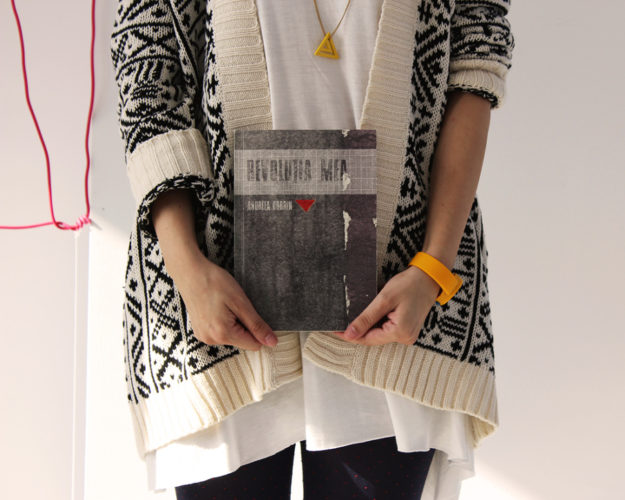
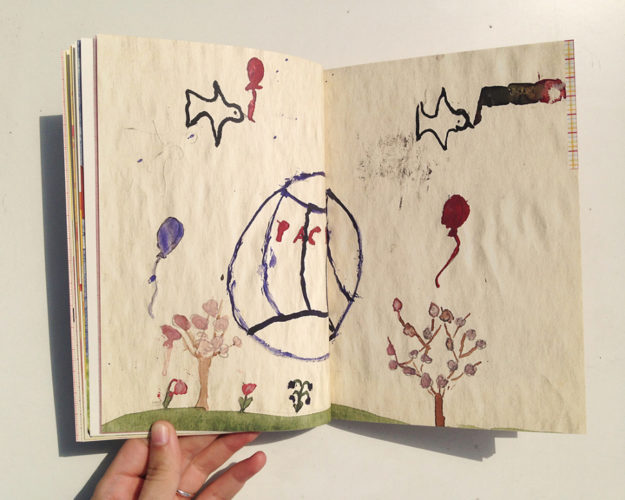
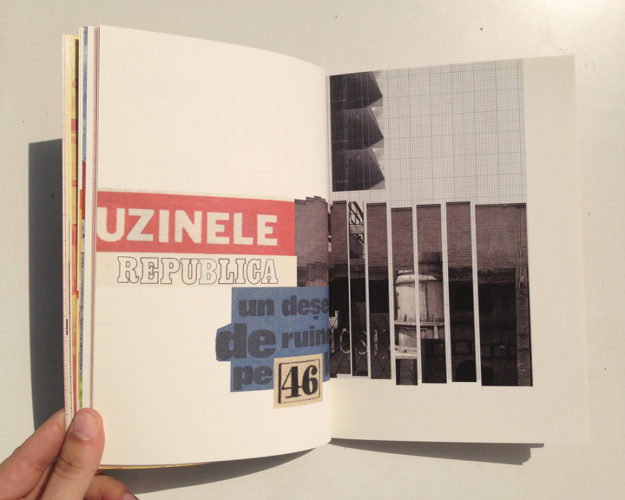
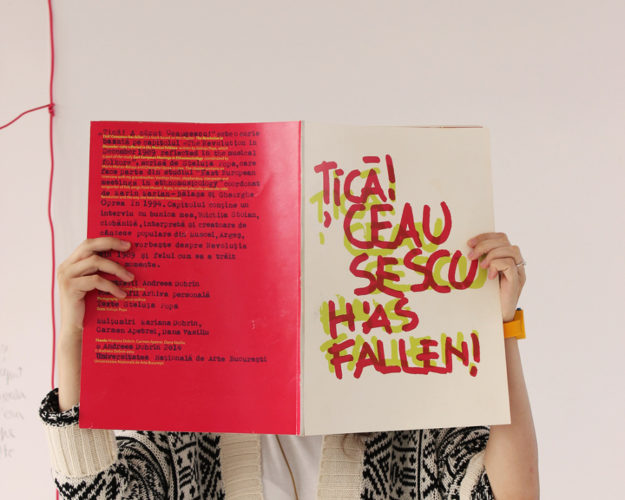
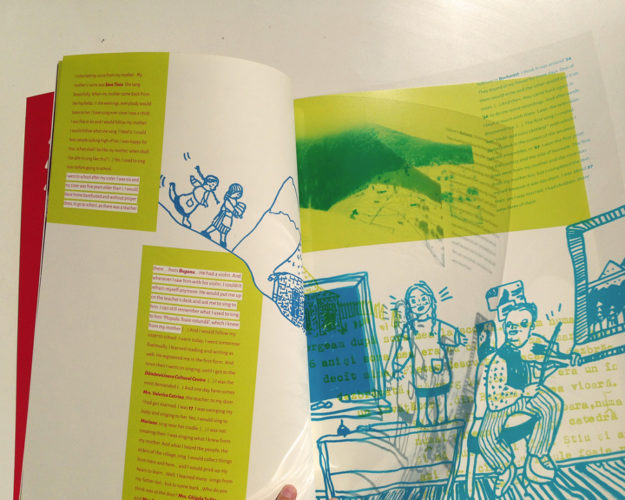
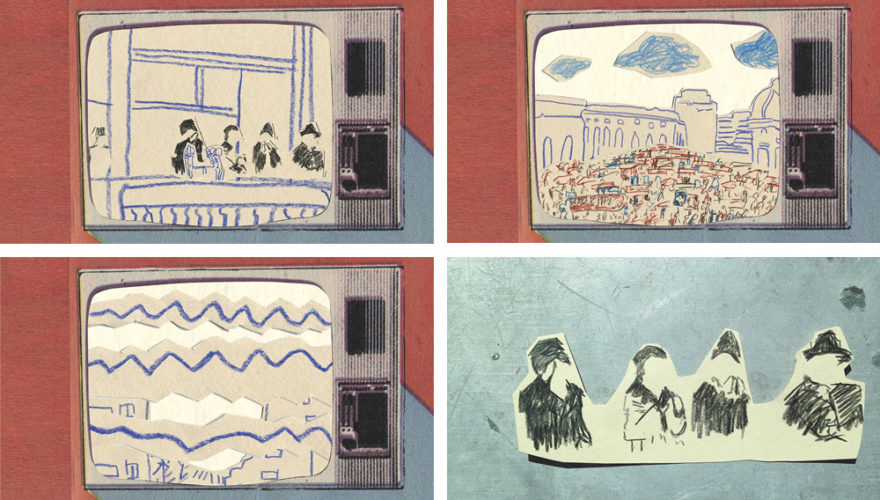
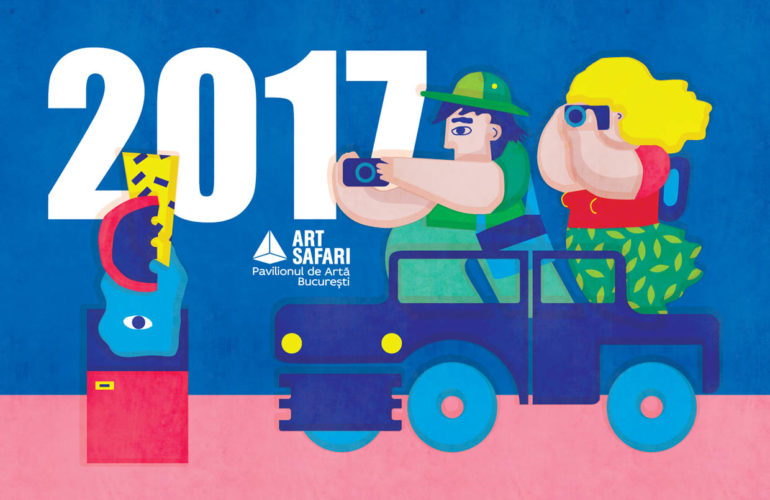
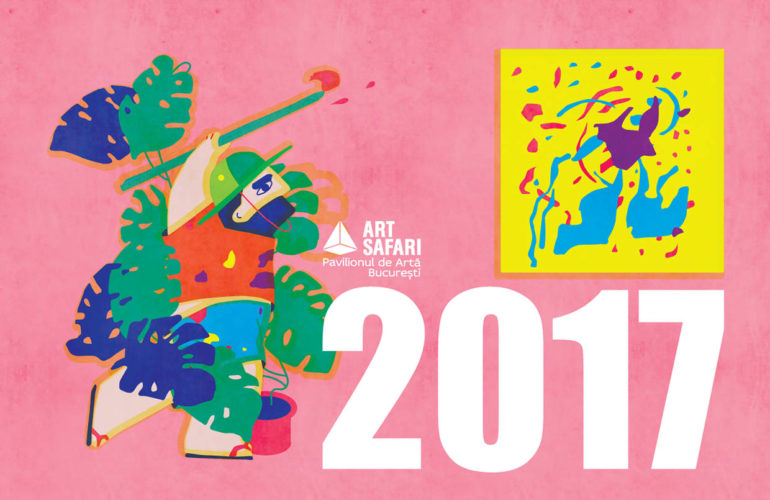

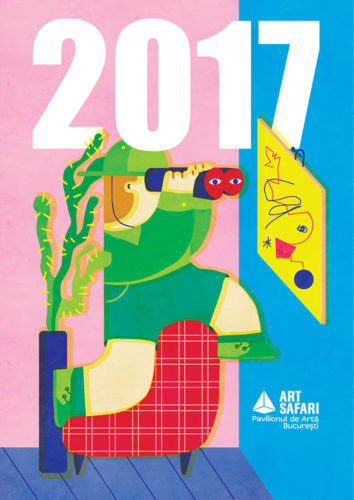

Comments are closed here.